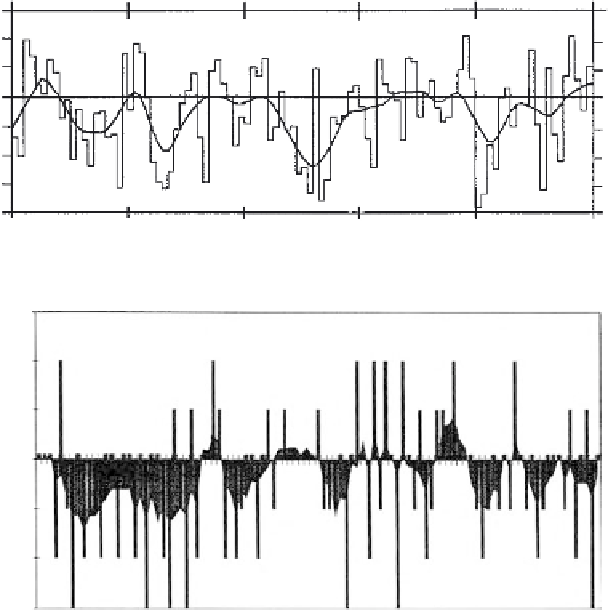Geoscience Reference
In-Depth Information
(a)
Figure 8.4 Fourteenth
century: (a) Deuterium
isotope ratio data from a
GISP2 ice core in Greenland
(Ogilvie et al.
2000
) and
(b) winter severity index for
Europe (Pfister et al.
1996
).
1300
1320
1340
1360
1380
1400
10
0
-10
-20
(b)
Index
very warm
3
warm
2
mild
1
0
cool
-1
cold
-2
very cold
-3
mild winters for the century (Pfister et al.
1996
). Table
8.1
complements
Figure
8.4
by highlighting years of climate variation and stress, and some of
the major human activities in Europe. The fourteenth century was a period of
increasing unrest across Europe, associated with a higher frequency of poor
harvests and warfare.
Overall, the frequency of colder winters (on the order of 1-1.5 8C colder than
today on average) and cool wet summers increased (Lamb
1977
). Pfister et al.
(
1996
) divided the century into four segments. Between 1303 and 1328, there
was a series of cold, severe winters. The winter of 1322-3 was recorded as the
coldest of any in the last 300 years. Many of the summers during this period were
wetter than normal. From the end of the 1320s to around the mid 1350s,
temperatures were ''average'' for the century. Western Europe saw wetter
summers after about 1340, but eastern Europe was comparatively dry. While
cold seasons dominated, there were no excessively severe winters. Between
1354 and 1375 winter temperatures were highly variable. Winters were very
severe in 1354-5 and 1363-4, and lakes and rivers froze in northern Italy and on

Search WWH ::

Custom Search